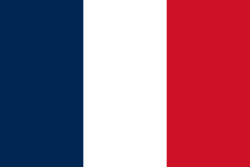
Back Cochinchina AST Cochinchina francesa Spanish Cochinchine française French קוצ'ינצ'ינה הצרפתית HE Cocincina Italian フランス領コーチシナ Japanese 프랑스령 코친차이나 Korean ໂຄຊິນຈີນຂອງຝຣັ່ງ Laothian Frans-Cochinchina Dutch Cochinchina Francesa Portuguese
Colony of Cochinchina | |||||||||
|---|---|---|---|---|---|---|---|---|---|
| 1862–1949 | |||||||||
| Motto: Liberté, égalité, fraternité "Liberty, Equality, Fraternity" | |||||||||
| Anthem: "La Marseillaise"
(1946–1949) | |||||||||
Localised version of the Great Seal of France:[1] | |||||||||
 Cochinchina in 1920 | |||||||||
| Status | Colony of France (1862–1949) Constituent territory of French Indochina (1887–1949) | ||||||||
| Capital | Saigon (1862–1931) Saigon–Cholon (1931–1949)[a] | ||||||||
| Common languages | French Vietnamese Khmer Chinese | ||||||||
| Religion | Buddhism Hinduism Confucianism Taoism Catholicism Animism Caodaism Hòa Hảo Islam | ||||||||
| Demonym(s) | Cochinchinese | ||||||||
| Government | Colonial administration (1858–1946) Autonomous Republic (1946–1949) | ||||||||
| Governor | |||||||||
• 1858–1859 | Charles Rigault de Genouilly | ||||||||
• 1947–1949 | Pierre Boyer De LaTour du Moulin | ||||||||
| President | |||||||||
• 1946 | Nguyen Van Thinh | ||||||||
• 1947–1948 | Nguyễn Văn Xuân | ||||||||
• 1948-1949 | Trần Văn Hữu | ||||||||
| Historical era | New Imperialism | ||||||||
| 17 February 1859 | |||||||||
| 5 June 1862 | |||||||||
• Part of French Indochina | 17 October 1887 | ||||||||
| 28 July 1941 | |||||||||
| 2 September 1945 | |||||||||
• Autonomous Republic of Cochinchina | 1 June 1946 | ||||||||
• Merged to Vietnam | 4 June 1949 | ||||||||
| Population | |||||||||
• 1878 | 1,657,500[b][2] | ||||||||
• 1920 | 3,800,000[3] | ||||||||
| Currency | Vietnamese văn (1862–1945) Cochinchina piastre (1878–1885) French Indochinese piastre (1885–1949) | ||||||||
| |||||||||
| Today part of | Vietnam | ||||||||
French Cochinchina (sometimes spelled Cochin-China; French: Cochinchine française; Vietnamese: Xứ thuộc địa Nam Kỳ, chữ Hán: 處屬地南圻)[c] was a colony of French Indochina from 1862 to 1949, encompassing the Mekong Delta and adjacent provinces in what is now the southern region of Vietnam, with its administrative capital in Saigon (present-day Ho Chi Minh City). In the face of recurring peasant unrest, and of growing political agitation in Saigon, the French operated a plantation economy whose primary strategic product was rubber.
After the end of the Japanese occupation (1941–1945) and the expulsion from Saigon of the Communist-led, nationalist Viet Minh in 1946, the territory was reorganized by the French as the Autonomous Republic of Cochinchina, a decision that helped trigger the First Indochina War. In a further move to deny the claims of the Democratic Republic of Vietnam declared in Hanoi by the Viet Minh, in June 1949 Cochinchina was united with the protectorates of Annam and Tonkin under their former de jure emperor Bảo Đại as the State of Vietnam within the French Union.
- ^ Lecompte, Jean – Monnaies et jetons de l'Indochine Française. (Principality of Monaco, 2013) Quote: "Les légendes sont bien sûr modifiées. A gauche, les attributs de l'agriculture et des beaux-arts sont remplacés par des épis de riz et à droite figure une ancre symbolisant le ministère de la Marine et des Colonies. Hélas, Albert-Désiré Barre décède le 29 décembre 1878 et c'est alors son frère aîné Auguste-Jean Barre qui lui succède et mène à terme le projet. Les premières frappes sortent en 1879." (in French)
- ^ Goscha, Christopher (2016). Vietnam: A New history. Basic Books. p. 75. ISBN 978-0-46509-437-0.
- ^ Kiernan, Ben (2019). Việt Nam: a history from earliest time to the present. Oxford University Press. p. 330. ISBN 978-0-190-05379-6.
Cite error: There are <ref group=lower-alpha> tags or {{efn}} templates on this page, but the references will not show without a {{reflist|group=lower-alpha}} template or {{notelist}} template (see the help page).


